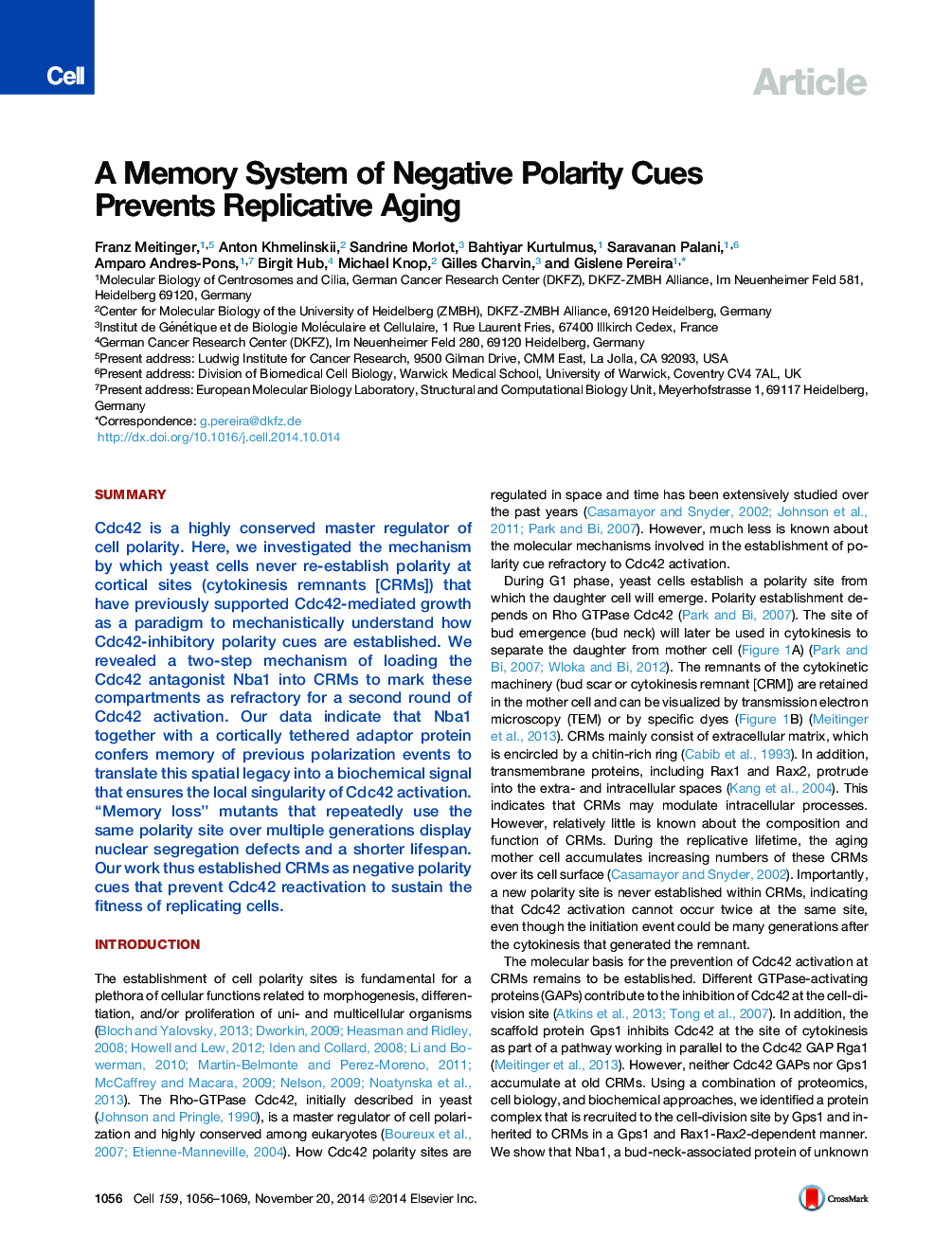| Article ID | Journal | Published Year | Pages | File Type |
|---|---|---|---|---|
| 2035372 | Cell | 2014 | 14 Pages |
•Identification of a protein complex that antagonizes Cdc42 activation is discussed•Cdc42 inhibitory complexes stably associate with cytokinesis remnants•Cytokinesis remnants act as memory for previous polarization events•Negative polarity cues at cytokinesis remnants prevent replicative aging
SummaryCdc42 is a highly conserved master regulator of cell polarity. Here, we investigated the mechanism by which yeast cells never re-establish polarity at cortical sites (cytokinesis remnants [CRMs]) that have previously supported Cdc42-mediated growth as a paradigm to mechanistically understand how Cdc42-inhibitory polarity cues are established. We revealed a two-step mechanism of loading the Cdc42 antagonist Nba1 into CRMs to mark these compartments as refractory for a second round of Cdc42 activation. Our data indicate that Nba1 together with a cortically tethered adaptor protein confers memory of previous polarization events to translate this spatial legacy into a biochemical signal that ensures the local singularity of Cdc42 activation. “Memory loss” mutants that repeatedly use the same polarity site over multiple generations display nuclear segregation defects and a shorter lifespan. Our work thus established CRMs as negative polarity cues that prevent Cdc42 reactivation to sustain the fitness of replicating cells.
Graphical AbstractFigure optionsDownload full-size imageDownload high-quality image (565 K)Download as PowerPoint slide
